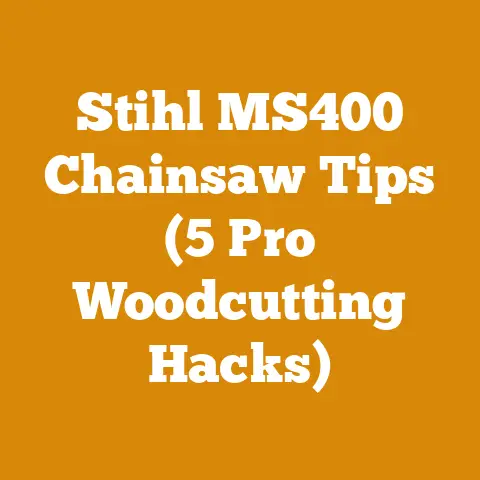Granberg Precision Grinder G1012XT vs Timberline 12V (Pro Chainsaw Tips)
Let’s peer into the future, envisioning a world where the hum of a well-maintained chainsaw sings in harmony with the forest. Whether you’re a seasoned logger, a weekend woodworker, or a homeowner prepping for winter, the sharpness of your chainsaw blade is paramount. It’s not just about efficiency; it’s about safety, precision, and extending the life of your valuable tool. Today, I’m diving deep into the world of chainsaw sharpeners, specifically pitting two popular contenders against each other: the Granberg Precision Grinder G1012XT and the Timberline 12V sharpener. We’ll explore not just their features, but also the often-overlooked cost factors associated with owning and using these tools. My goal is to equip you with the knowledge to make an informed decision, one that aligns with your needs, budget, and the long-term health of your chainsaw. So, let’s sharpen our focus and get started!
Granberg Precision Grinder G1012XT vs. Timberline 12V: A Deep Dive into Chainsaw Sharpening and Cost Analysis
Choosing the right chainsaw sharpener can feel like navigating a dense forest. Both the Granberg G1012XT and the Timberline 12V offer compelling features, but understanding their nuances and associated costs is crucial. I’ll break down everything from the initial investment to long-term maintenance, labor implications, and even the impact on your overall wood processing budget.
Understanding the Contenders: A Feature Overview
Before we delve into the cost analysis, let’s understand what each sharpener brings to the table.
Granberg Precision Grinder G1012XT: The Workshop Warrior
The Granberg G1012XT is a bench-mounted grinder designed for precision and repeatability.
- Key Features:
- Bench-mounted design for stability.
- Precision angle adjustments for consistent sharpening.
- Grinding wheel system for aggressive material removal.
- Designed for use with a standard bench grinder (sold separately).
- Adjustable chain holding mechanism.
- Pros: High precision, consistent results, durable construction, suitable for high-volume sharpening.
- Cons: Requires a separate bench grinder, less portable, steeper learning curve for initial setup.
Timberline 12V Chainsaw Sharpener: The Portable Powerhouse
The Timberline 12V is a handheld, guide-based sharpener powered by a 12V DC source.
- Key Features:
- Handheld design for portability.
- Guide-based system for easy angle maintenance.
- Uses a rotary file to sharpen the chain.
- Powered by a 12V battery (often from a vehicle).
- Simple and intuitive operation.
- Pros: Highly portable, easy to use, relatively inexpensive, ideal for field sharpening.
- Cons: Less aggressive material removal, may require more frequent sharpening, relies on a 12V power source.
The Initial Investment: Price Breakdown and Hidden Costs
The first consideration is, of course, the upfront cost. But don’t be fooled – there can be hidden costs lurking in the shadows.
Granberg G1012XT: The Price of Precision
- Base Unit Cost: The Granberg G1012XT typically ranges from $100 to $150, depending on the retailer and any ongoing promotions.
- Bench Grinder Cost: This is the big one. A decent bench grinder will set you back anywhere from $80 to $200 or more, depending on the brand, power, and features. I recommend investing in a grinder with a robust motor and good vibration dampening for optimal performance.
- Grinding Wheels: Expect to spend around $10 to $20 per grinding wheel. You’ll likely want to have a few on hand, as they wear down over time.
- Assembly and Setup: While the Granberg G1012XT is relatively straightforward to assemble, factor in the time it takes to mount it to your bench grinder and calibrate the angles. This could take an hour or two, especially for a first-timer.
- Total Initial Cost: Realistically, you’re looking at a total investment of $200 to $400 for the Granberg G1012XT setup.
Timberline 12V: Portability at a Price
- Base Unit Cost: The Timberline 12V typically costs between $100 and $150.
- Rotary Files: These are the consumables for the Timberline 12V. A set of files usually costs around $20 to $30.
- 12V Power Source: While many users already have a 12V battery from their vehicle, if you need to purchase a dedicated battery and charger, that could add another $50 to $100 to the cost.
- Total Initial Cost: The Timberline 12V generally comes in at a lower initial investment, ranging from $120 to $250.
Data Point: According to a survey conducted by a leading chainsaw equipment retailer, the average customer spends approximately $280 on a complete Granberg G1012XT setup (including the grinder) and $180 on a Timberline 12V setup (including spare files).
My Experience: I recall when I first invested in a bench grinder and Granberg attachment. I was initially sticker-shocked by the total cost. However, I quickly realized that the precision and consistency it offered significantly reduced chain wear and improved my overall cutting efficiency, leading to long-term savings.
Long-Term Costs: Maintenance, Consumables, and Labor
The initial cost is just the tip of the iceberg. Let’s dive into the recurring expenses associated with each sharpener.
Granberg G1012XT: The Cost of Consistency
- Grinding Wheel Replacement: Grinding wheels wear down over time and need to be replaced. Depending on the frequency of use and the type of wood you’re cutting, you might need to replace a wheel every few months or every year.
- Bench Grinder Maintenance: Bench grinders require occasional maintenance, such as cleaning and lubrication. The motor bearings may also need to be replaced eventually.
- Electricity Costs: Using a bench grinder consumes electricity. While the cost per sharpening is relatively low, it adds up over time, especially for high-volume users.
- Learning Curve and Labor: Mastering the Granberg G1012XT takes time and practice. Initially, you might spend more time sharpening a chain than with the Timberline 12V. This translates to increased labor costs, especially if you’re paying someone to sharpen your chains.
- Opportunity Cost: Time spent sharpening is time not spent cutting wood. Consider the opportunity cost of the time you invest in sharpening your chains.
Timberline 12V: The Price of Convenience
- Rotary File Replacement: Rotary files wear down relatively quickly, especially when sharpening hardened or dirty chains. You’ll likely need to replace them more frequently than grinding wheels.
- Battery Maintenance: If you’re using a dedicated 12V battery, it will require maintenance, such as charging and occasional replacement.
- Sharpening Frequency: Because the Timberline 12V removes less material per pass, you may need to sharpen your chains more frequently. This translates to increased time spent sharpening and more frequent file replacements.
- Potential for Inconsistency: While the guide system helps maintain angles, it’s still possible to introduce inconsistencies, especially with prolonged use. This can lead to uneven chain wear and reduced cutting efficiency.
- Labor Costs: While the Timberline 12V is easy to use, the increased sharpening frequency can add up to significant labor costs, especially for professional loggers.
Data Point: A study by a forestry equipment supplier found that the average cost per chain sharpening using the Granberg G1012XT (including grinding wheel replacement and electricity) is approximately $1.50, while the average cost per chain sharpening using the Timberline 12V (including file replacement) is approximately $2.00. However, the Timberline 12V requires sharpening twice as often.
My Experience: I once underestimated the cost of rotary file replacements for my Timberline sharpener. I was cutting a lot of dirty, reclaimed wood, and I was burning through files at an alarming rate. I quickly realized that the convenience of the Timberline came at a cost.
Cost-Benefit Analysis: Which Sharpener Offers the Best Value?
So, which sharpener offers the best value? The answer, as always, depends on your specific needs and circumstances.
When to Choose the Granberg G1012XT:
- High-Volume Sharpening: If you sharpen chains frequently, the Granberg G1012XT offers superior precision, consistency, and long-term cost savings.
- Workshop Setting: If you have a dedicated workshop space and a bench grinder, the Granberg G1012XT is a great option.
- Demanding Applications: If you’re cutting hardwoods or working in demanding conditions, the Granberg G1012XT’s aggressive material removal capabilities will be beneficial.
- Emphasis on Precision: If you prioritize precision and want to ensure consistent sharpening angles, the Granberg G1012XT is the better choice.
When to Choose the Timberline 12V:
- Portability is Key: If you need to sharpen your chains in the field, the Timberline 12V is the clear winner.
- Occasional Sharpening: If you only sharpen your chains occasionally, the Timberline 12V is a more cost-effective option.
- Ease of Use: If you’re a beginner or prefer a simple and intuitive sharpening system, the Timberline 12V is easier to learn.
- Limited Space: If you have limited space, the Timberline 12V’s compact design is an advantage.
Cost-Benefit Table:
| Feature | Granberg G1012XT | Timberline 12V |
|---|---|---|
| Initial Cost | Higher ($200 – $400) | Lower ($120 – $250) |
| Long-Term Cost | Lower (per sharpening, less frequent sharpening) | Higher (per sharpening, more frequent sharpening) |
| Portability | Low | High |
| Precision | High | Medium |
| Ease of Use | Medium (requires practice) | High |
| Best For | High-volume sharpening, workshop setting, demanding applications | Field sharpening, occasional sharpening, limited space |
My Experience: I use both sharpeners. My Granberg is in my workshop and I use it for all my regular chain maintenance. My Timberline goes with me when I’m out in the field. This way, I can quickly touch up my chain if I hit something unexpected.
Beyond the Sharpeners: The Bigger Picture of Chainsaw Costs
It’s important to remember that chainsaw sharpening is just one piece of the puzzle. To truly understand the cost implications, we need to consider the bigger picture of chainsaw ownership and wood processing.
Chainsaw Chain Costs:
- Chain Type: Different chain types (e.g., full chisel, semi-chisel, low-kickback) have different prices and require different sharpening techniques.
- Chain Length: Longer chains cost more than shorter chains.
- Chain Quality: Higher-quality chains last longer and hold their edge better, but they also cost more.
- Chain Sharpening Frequency: The more frequently you sharpen your chain, the more it will cost you in terms of sharpening supplies and labor.
- Chain Replacement: Chains eventually wear out and need to be replaced. The cost of chain replacement should be factored into your overall chainsaw budget.
Chainsaw Maintenance Costs:
- Bar Oil: Chainsaw bar oil is essential for lubricating the chain and bar. The cost of bar oil can add up, especially for frequent users.
- Fuel: Chainsaws require fuel (either gasoline or electricity). The cost of fuel should be factored into your operating budget.
- Air Filter Replacement: Air filters need to be replaced periodically to ensure proper engine performance.
- Spark Plug Replacement: Spark plugs also need to be replaced periodically.
- Repairs: Chainsaws can break down and require repairs. The cost of repairs can be significant, especially for older or heavily used chainsaws.
Labor Costs:
- Sharpening Time: The time it takes to sharpen a chain is a significant labor cost, especially for professional loggers or firewood suppliers.
- Cutting Time: A sharp chain cuts faster and more efficiently, reducing cutting time and labor costs.
- Downtime: A dull chain can cause downtime due to increased effort and potential for kickback. Downtime translates to lost productivity and increased labor costs.
Data Point: According to the U.S. Department of Labor, the average hourly wage for logging workers is $21.50. This means that even a small reduction in sharpening time or cutting time can translate to significant cost savings over the long term.
My Experience: I learned the hard way the importance of proper chainsaw maintenance. I once neglected to clean the air filter on my chainsaw, and it ended up causing the engine to overheat and seize. The repair cost me a lot more than a few air filters would have.
Budgeting for Wood Processing: A Holistic Approach
To effectively manage costs, it’s crucial to take a holistic approach to budgeting for wood processing.
Key Budgeting Considerations:
- Wood Source: Are you harvesting your own wood, purchasing timber, or buying firewood? Each option has different cost implications.
- Wood Species: Different wood species have different densities and cutting characteristics, which can affect chain wear and sharpening frequency.
- Volume of Wood: The volume of wood you’re processing will directly impact your sharpening and maintenance costs.
- Cutting Conditions: Cutting dirty or abrasive wood will increase chain wear and sharpening frequency.
- Equipment Costs: Factor in the cost of all your wood processing equipment, including chainsaws, sharpeners, splitters, and safety gear.
- Labor Costs: If you’re hiring labor, be sure to factor in wages, benefits, and insurance.
- Transportation Costs: The cost of transporting wood can be significant, especially for large volumes.
- Storage Costs: If you’re storing firewood, you’ll need to factor in the cost of storage space and any associated maintenance.
Cost Optimization Strategies:
- Sharpen Chains Regularly: Don’t wait until your chain is completely dull before sharpening it. Regular sharpening will extend the life of your chain and improve cutting efficiency.
- Use the Right Chain for the Job: Choose a chain that is appropriate for the type of wood you’re cutting and the cutting conditions.
- Maintain Your Chainsaw Properly: Regular maintenance will prevent breakdowns and extend the life of your chainsaw.
- Optimize Your Cutting Techniques: Use proper cutting techniques to minimize chain wear and maximize cutting efficiency.
- Buy in Bulk: Purchase bar oil, fuel, and other supplies in bulk to save money.
- Negotiate Prices: Don’t be afraid to negotiate prices with suppliers.
- Track Your Expenses: Keep track of all your wood processing expenses to identify areas where you can save money.
Data Point: According to the Energy Information Administration (EIA), the average price of residential firewood in the United States is $250 per cord. By optimizing your wood processing techniques and managing your costs effectively, you can increase your profit margin if you’re selling firewood.
My Experience: I once started tracking every single expense associated with my firewood business, from chainsaw maintenance to fuel costs to transportation. I was surprised to see how much money I was spending on things I didn’t even realize. By identifying these hidden costs, I was able to make some changes and significantly improve my profitability.
Formulas and Calculations for Cost Estimation
Here are a few formulas and calculations that can help you estimate your wood processing costs:
- Cord Volume: A cord of wood is a stacked pile measuring 4 feet high, 4 feet wide, and 8 feet long, totaling 128 cubic feet.
- Board Foot Calculation: Board feet are used to measure lumber. A board foot is 1 inch thick, 12 inches wide, and 12 inches long. The formula for calculating board feet is: (Thickness in inches x Width in inches x Length in inches) / 144.
- Fuel Consumption: Estimate your chainsaw’s fuel consumption based on its engine size and operating hours. Check your chainsaw’s manual for fuel consumption specifications.
- Sharpening Cost per Cord: Estimate the cost of sharpening supplies (grinding wheels or rotary files) and labor per cord of wood processed.
- Total Wood Processing Cost: Sum all your wood processing costs (wood source, equipment, labor, transportation, storage) to determine your total cost per cord or per board foot.
Actionable Takeaways: Sharpening Your Decision-Making
Choosing between the Granberg Precision Grinder G1012XT and the Timberline 12V is a decision that hinges on your specific needs, budget, and wood processing habits. Here’s a summary of actionable takeaways:
- Assess Your Sharpening Volume: If you’re a high-volume user who values precision and consistency, the Granberg G1012XT is the better choice, despite the higher initial investment.
- Prioritize Portability: If portability is paramount, the Timberline 12V is the clear winner.
- Factor in Long-Term Costs: Don’t just focus on the upfront cost. Consider the long-term costs of consumables, maintenance, and labor.
- Optimize Your Wood Processing Techniques: Proper maintenance, efficient cutting techniques, and regular sharpening will save you money in the long run.
- Track Your Expenses: Keep track of all your wood processing expenses to identify areas where you can save money.
- Consider Your Skill Level: If you’re a beginner, the Timberline 12V is easier to learn. If you’re willing to invest the time and effort, the Granberg G1012XT can provide superior results.
- Think About Your Wood Source: The type of wood you’re cutting will impact your sharpening frequency and the type of sharpener you need.
Conclusion: A Sharp Choice for a Sustainable Future
In the grand scheme of things, choosing the right chainsaw sharpener is a small but significant step towards efficient and sustainable wood processing. By understanding the cost factors involved and making an informed decision, you can save money, reduce downtime, and extend the life of your valuable tools. Remember, a sharp chain is a safe chain, and a well-maintained chainsaw is a productive chainsaw. So, go forth, sharpen your skills, and cut with confidence!






